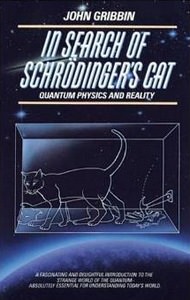Just how many realities are there anyway - yours, mine, his, hers?
As Einstein suggested, is every form of reality merely an illusion? Is nothing real?
"Reality is merely an illusion, albeit a very persistent one."
~ Albert Einstein
What once might have been labeled a purely philosophical argument now lurks in the revelations of quantum research.The current understanding - that all probabilities all exist at once, in the same reality, until you measure or observe them - is mind-blowing. And yet the math is there to prove it.
But let's slow down a bit.
It might be more useful to start with how the human brain perceives reality, and how this gives way to subjective experience. Because no two brains perceive the same events the same way.
Human Perception
The human brain operates in two halves: the right brain and the left brain. They have completely separate roles and agendas. Some would even say they have separate personalities.
However, in order to function, the two halves of the human brain must communicate as one via the corpus callosum.
Interestingly, scans show that male brains excel at thinking within one hemisphere at a time, while female brains excel at thinking across both hemispheres.
The right brain is all about the present moment; right here, right now. It thinks in pictures and learns through the kinesthetic movement of your body. It absorbs energy from the world around you and translates that into information for your sensory systems. It doesn't know the difference between your individual consciousness and the world around you.
The left brain is a very different place. It thinks linearly and methodically. It picks out countless details from the events in the past and makes calculated predictions about the future. The left hemisphere thinks in language, which creates your internal voice. Crucially, it makes you aware of your existence as a separate being from the mass energy field perceived by the right brain.
Your Subjective Reality
Imagine if the human brain had evolved with only the functions of the right hemisphere. Your perception of reality would be completely different. You would be drifting around in a universe filled with energy in the here and now, with no perception of the past and future.
You wouldn't know where your body ended and the ground began, or the difference between you and me.
This is a very different perception of the world. And it highlights the nature of subjective reality; how different perceptions lead to completely different experiences of the reality we accept as truth.
Knowing this about the human brain, the question "what is reality?" changes form. It now hinges on your individual perception.
Types of Reality
This has led to multiple theories of reality by various philosophers and scientists:
Phenomenological reality is based on subjective experience. Whatever you observe is instantly real to you. This theory of reality means that unreality is non-existent. Therefore lucid dreams, hallucinations, spiritual experiences, and astral travel are all forms of one subjective reality.
Consensus reality is based on the opinions and observations made by a group of people. A few individuals may decide on an interpretation of an event, which spreads across entire societies and becomes a consensual truth. Religion is a good example of a socially constructed reality.
 Non-reality
Non-reality simply means that there is no such thing as objective reality. Every possible observation or interpretation is tainted by subjectivity and therefore does not constitute truth. Nothing is real.
The latter is supported by quantum theory, which states that nothing is real until we measure (observe) it. Read
In Search of Schrodinger's Cat by John Gribbin for an excellent introduction to this topic.
This revelation about the nature of reality was prompted by one of the most mind-boggling experiments of all time: the Double Slit Experiment.
The Double Slit Experiment
When quantum physicists stumbled upon the Double Slit Experiment, they were in for a shock. This famous quantum experiment proves how tiny particles behave differently when they're being measured.
Put another way, until we observe reality, it exists as a wave of probabilities. Only by measuring reality do we collapse the wave function and make it "choose" a determined path of action.
The Copenhagen Interpretation, developed by Neils Bohr in 1920, says that quantum particles exist in all possible states at once - until we observe them.
Albert Einstein found this idea abhorrent: "Do you really think the moon isn't there if you aren't looking at it?"
"Einstein, don't tell God what to do," replied Bohr.
"Those who are not shocked when they first come across quantum theory cannot possibly have understood it."
~ Neils Bohr
The two geniuses were locked in a fierce debate over quantum theory until John Bell produced a groundbreaking equation in 1964. He proved that either information travels faster than light or particles exist in many states simultaneously.
It was a victory for Bohr - and to this day, many scientists accept The Copenhagen Interpretation.
The alternative explanation is known as the Many-Worlds theory. It supposes that for every possible outcome, the universe splits to accommodate each one. This takes the observer out of the equation.
Great... Now we have infinite realities.
Final Thoughts
So... what is reality? Is it an illusion? Is there a multiverse? Does reality exist in all states and not at all until it is measured?
It's a tantalizing field of research. The truth about reality is out there. And it is definitely much crazier than we can imagine.










